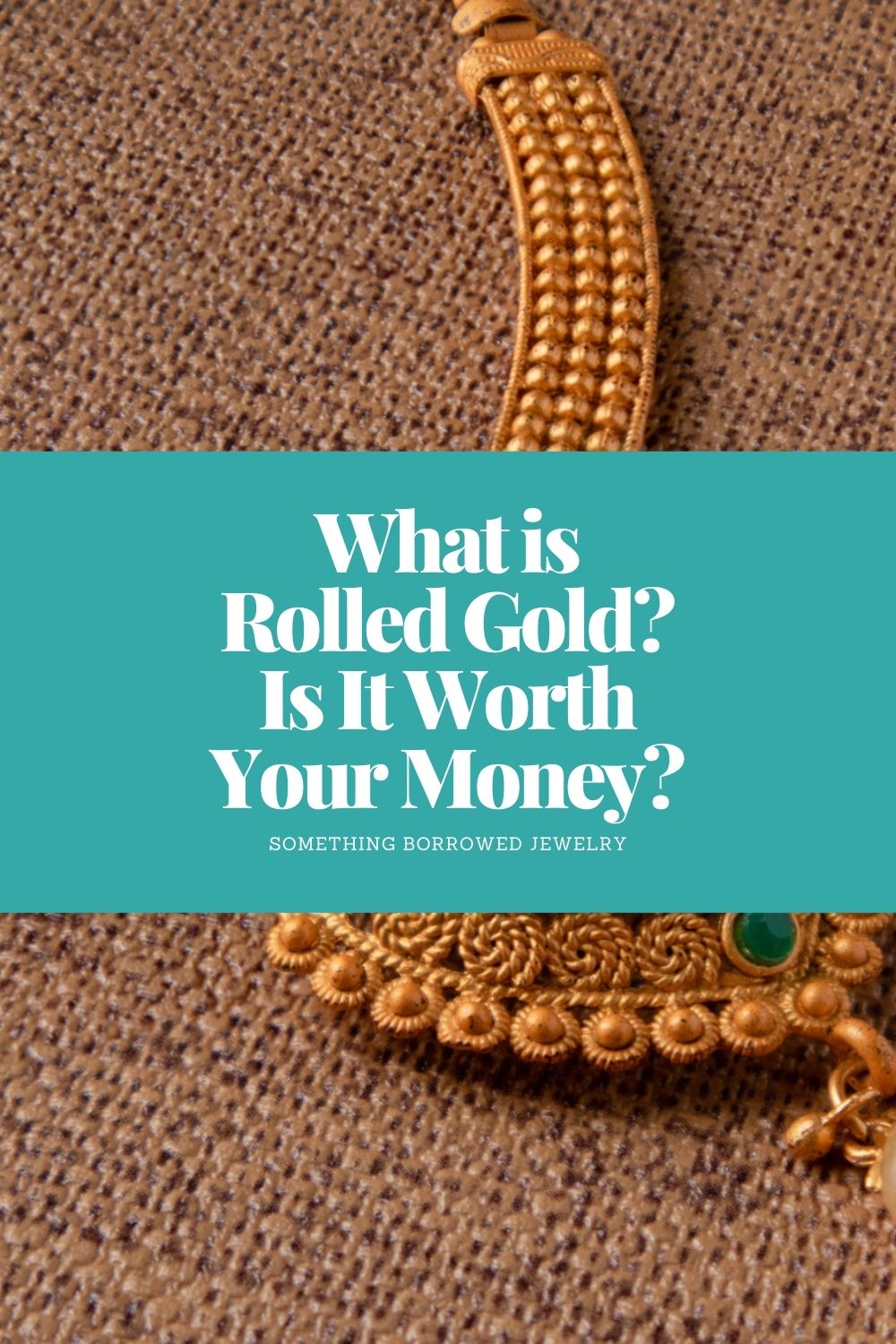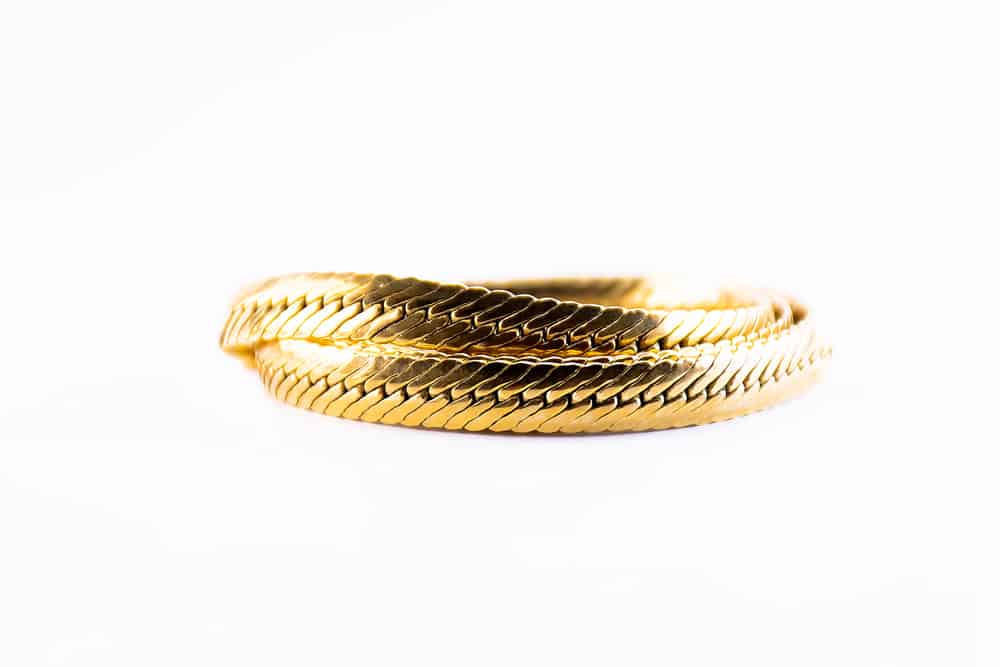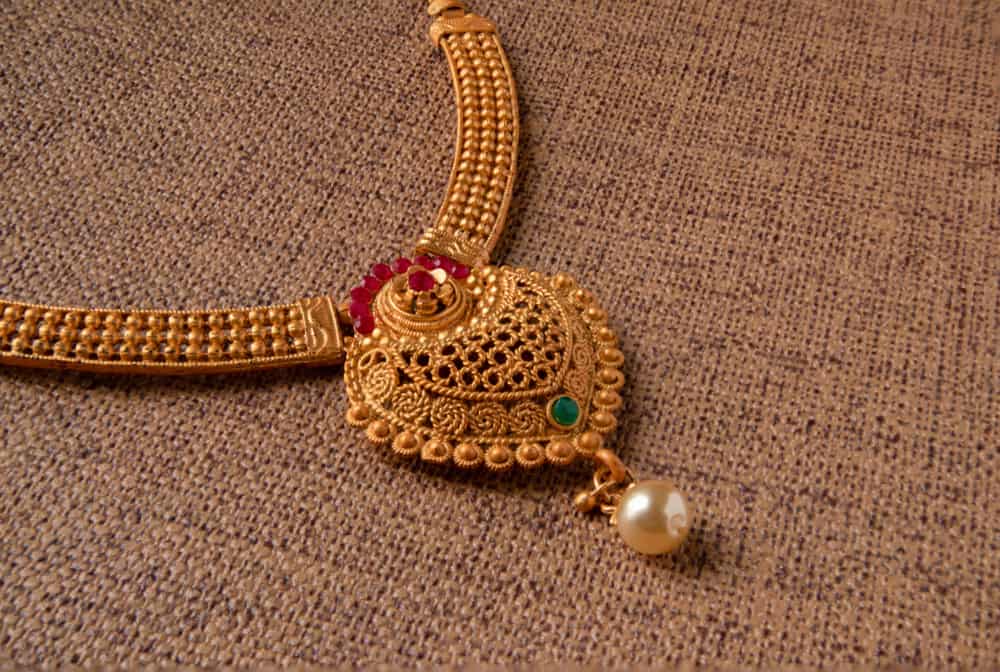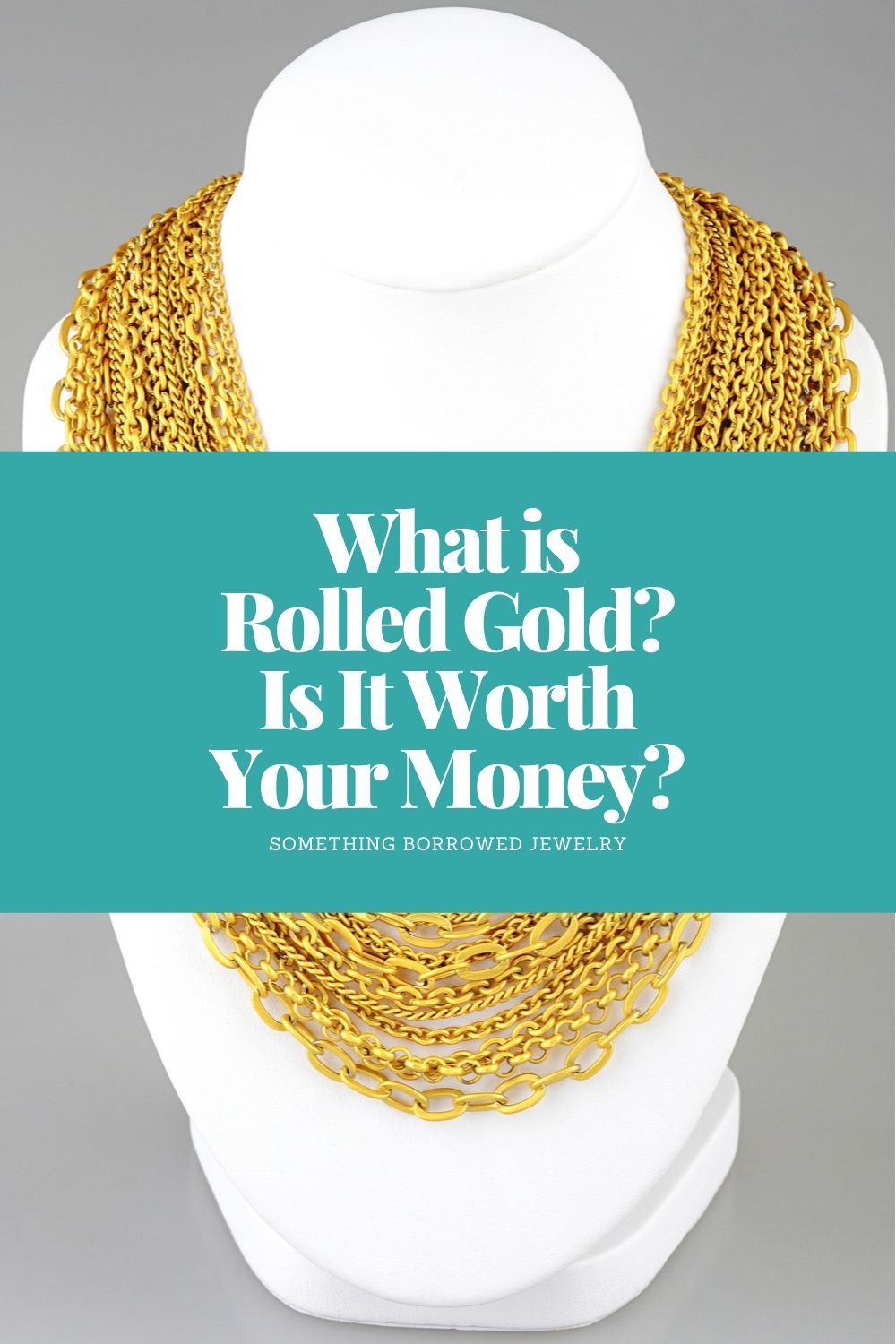If you are a gold enthusiast but you’re discouraged by the metal\’s exorbitant prices, rolled gold would make the perfect alternative. Find, in this article, everything there’s to know about rolled-gold.
When you press two pieces of gold onto silver, brass, or any other base metal, you get rolled gold. Two sheets of pure gold sandwich a base metal, and after fusing with heat, the end product is rolled gold.

Rolled gold is a valuable metal that makes low-priced golden jewelry. Any weight of rolled gold contains less than 5% of pure gold.
Ornaments with rolled gold have a rating to certify their weight and purity. For instance, if you find a piece with the reading 1/40 14K RG, it’s a rolled gold with 2.5% pure gold from 14 karats.
History of Rolled Gold
The first rolled gold dates back to the 19th century when the British made costume jewelry in plenty.
In 1817, rolled gold was patented as layered gold in England. At the height of the Victorian era, this gold made semiprecious costume jewelry.
Then, during the first world war, the economic recession forced people into seeking cheaper alternatives to pure gold. The rolled gold gained popularity for its affordability and durability.
Rolled gold’s soaring popularity between 1920 and 1940s saw many people use it on necklaces, watches, and sometimes, even pens!
Today, gold rolling and fling is a widespread technique in the smithing of affordable golden jewelry.
Features of Rolled Gold
 something borrowed
something borrowed
How do I know my chain, necklace, or earring is rolled gold? Modern rolled gold ornaments have stamps that show the quality and amount of gold present.
The RG mark stands for “Rolled Gold.”
RGP means “rolled gold plate.”
However, rolled gold jewelry made in the 19th century usually has the stamp “Gilt.”
1/20 12K G.F is a mark that shows that the ornament is from the 20th century. The stamp could also read 1/20 12K RG.
Advantages of Rolled Gold
- Rolled gold can last for several years if well maintained.
- Far cheaper than solid gold
- Color, texture, and even luster appears exactly the same as pure solid gold
- Rolled gold is healthy for all skin types and has no allergies associated with it.
Disadvantages of Rolled Gold
- Sometimes the rolled layer of gold can flake or wear down.
- Oil and dirt can build up sometimes and make the jewelry lose color.
- Rolled gold depreciates over time.
Rolled Gold vs. Real Solid Gold
Solid gold is a terminology that describes hallmarked gold. Hallmarked means that the gold has precise information about its origin and quality.
For instance, solid gold contains information about the number of carats present and sometimes, even the year or date of its release. If you are working with British gold, it will be hallmarked to tell whether it’s Victorian or Edwardian.
But, rolled gold is some piece of base metal that is firmly wrapped with solid gold.
Differences Between Rolled Gold and Gold Plated Jewelry
Rolled gold has up to 5% of actual gold in its weight, but gold plating sprays a thin layer of the precious metal on the ornament.
Gold plating has copper or silver as the base. Then, a layer of pure gold covers it through electroplating or chemical reactions.
While rolled gold can have about 5% pure gold, electroplated jewelry may measure less than 0.05%. So, the rolled jewelry can have up to ten times more gold than plated pieces.
Plated gold peels off quickly but costs less than rolled gold.
Differences Between Rolled gold and Gold-filling
In ancient times, people held gold filling to be the same as rolled gold. Smiths knew the difference, but; other people used the terms interchangeably. In any way, both filled and rolled gold pieces of jewelry have the same crafting process.
But, there’s more gold content in gold filled than in the rolled gold alloy. Rolled gold means that the jewelry has less than 5% of the pure metal in its weight. Gold filling, however, has more than 5% of the weight in gold.
Countries such as the United States have strict definition standards to draw a line between the two precious jewelry pieces. The Code of Federal Regulations (CFR) defines gold-filled jewelry as having at least 1/20 or 5% of pure gold content in its total weight. Any metal jewelry or alloy that doesn’t hit this threshold is rolled gold.
The durability of Rolled Gold
The thickness and purity of gold determine your ornament’s durability. Gold is soft, and higher purities are more vulnerable to tears and scratches. So, the 10 karats and 14 karats gold are more durable than higher karats.
Also, thinker layers of gold are more durable. Fortunately, gold doesn’t discolor or tarnish over time. Gold, unlike iron or steel, is one of the least reactive metals on earth. So, it never rusts or reacts with other elements around it.
Does rolled gold jewelry tarnish?
The bonding process of rolled gold is so reliable that your jewelry will not flake off or tarnish. However, mind the oils and sweat from your skin as they may build up on the fine details of the jewelry. So, polish your precious pieces to keep them shiny.
Tips of Maintaining Rolled Gold Jewelry
 something borrowed
something borrowed
You can have your rolled gold ornaments for several years as long as you’re taking care of them. Just don’t expose them to corrosive chemicals, detergents, or swimming pools.
Here are ways to care for your rolled gold jewelry:
What happens when I swim or shower in my rolled gold jewelry?
Don’t swim with your rolled gold jewelry, shower rooms as the chlorinated water could discolor it. Swimming pools have acidic water that could corrode the gold away and ruin your ornament.
FAQs
Is it possible for all ornaments to be rolled gold?
Unfortunately, rolled gold has certain limitations that support allow some ornaments. Typically, the raw rolled gold is in the form of a wire or sheet of metal.
If you are looking for studio-customized and personalized jewelry, rolled gold will not be your best material. Instead, whenever you’re looking for good ornaments with sophisticated detail, it’s better you buy pure or plated gold and not rolled gold.
Will my skin get sick or change color when I wear rolled gold?
Rolled gold is hypoallergenic, which means it won’t affect your health or skin. Iron and copper ornaments usually leave a colored mark on your skin.
Copper, for instance, can make your skin green because of the compounds it makes with your are sweat. Iron, rust, and create a reddish-brown coloration. But, gold is healthy and unreactive and never leaves any residue of a compound on your skin.
Even if the base metal is copper, it’s covered with a gold layer, and therefore you will not be affected.
Why should I buy jewelry made from rolled gold?
If you love gold but can’t match the price of pure metal, you may turn to rolled gold as an alternative. In any way, you get the exact solid color and luster but at several bucks less. And, with appropriate maintenance, you can have your jewelry for a long time.
Can I resell my rolled gold?
Yes, rolled gold fetches a reasonable price, as long as it’s as good as new. The resale price of rolled gold depends on the base metal and the percentage of gold in the item.
Silver bases out-cost brass or copper. However, it’s not advisable to consider rolled gold as an investment for pawning or reselling.
Conclusion: Is Rolled Gold Jewelry Worth My Money?
Rolled gold offers the best alternative to solid gold ornaments. It’s more affordable than the precious solid metal, and it tends to last longer. Ornaments made from rolled gold have the same yellowish metallic luster of pure gold but come at a lesser price.
If you have a question or comment about rolled gold, talk to us in the comments section below.

Ten articles before and after
How Much is a 1963 Ben Franklin Half Dollar Worth? (Price Chart)
What Is A Baguette Diamond? (History, Pros & Cons)
What is a CVD Diamond? (Definition, Cost & Benefits)
How Much Is a 3-Carat Diamond Worth? (Price Chart)
50+ Meanings of Gold (What Gold Means in History, Business, Religion, Politics, Psychology)
How Long Does Gold Plated Jewelry Last? (Tips to Last Longer)
What is Edible Gold? (History, Types & Nutritional Facts)



